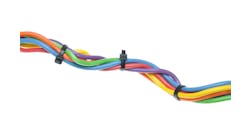The threshold sensitivity and resolution of measurements (smallest incremental change) has improved dramatically to better than 0.05% with new sensor technology and smart compensation of extraneous effects of operating conditions. The response of the air-actuated control valve has improved, but the smallest incremental change in position varies widely depending upon the actuator, positioner, valve type and valve heritage. If the valve was originally designed for on-off service, the ability to respond to small changes in signal can deteriorate by a factor of ten or more despite the use of the best positioner.
While the ISA standards ISA-75.25.01 and ISA-TR75.25.02 for valve response define testing for resolution, stiction in a valve may show up as a threshold sensitivity limit. Here we will refer to the smallest incremental change possible as precision whether due to threshold sensitivity or resolution. Deadband, the change needed to get a change in result for a change in direction is negligible for measurements without mechanical sensors. Deadband exists in valves due to backlash and can be considered to be about twice the precision. Since valve precision and deadband are the biggest sources of limit cycling, we offer understanding and check points to minimize this source of process variability.
The use of digital positioners has improved the precision of control valves to 0.1% if the positioner is tuned and the rest of the valve package does not pose limitations. The threshold sensitivity of pneumatic positioners ranged from 0.1% for two stage relay to 1% to spool type positioners. Pneumatic positioners did not sufficiently hold their calibration and did not provide a readback of valve positioner. Consequently, the low output limits of controllers needed to be -10% to ensure the valve was closed and problems with the dynamic response of control valves were hidden and test step sizes of 10% or larger were used. Digital positioners are the first step but not the only step for a good valve response.
Except for pH control, a precision of 0.1% and deadband of 0.2% is normally sufficient since the amplitude of a limit cycle is within the noise band or control band. The sliding stem globe valve with low friction packing and diaphragm actuators can achieve a 0.1% precision. However, rotary valves are advantageous for large lines sizes and streams with solids. Rotary valves can achieve a precision of 0.2% if a diaphragm actuator is used, the connection between the actuator shaft and valve stem is splined instead of pinned, there are no linkages introducing backlash, the friction of sealing surfaces and shaft length and size does not cause shaft windup, and the valve stem is cast with the internal flow element.
Piping valves originally designed as isolation (on-off) valves posing as control valves are the biggest culprit. A precision of 4% and a deadband of 8% have been observed for butterfly valves and ball valves designed for tight shutoff. Furthermore, the positioner feedback was actuator shaft instead of flow element position. Tests results from the digital positioner indicated a precision and deadband 10 times smaller than actual. Flow measurements and travel gages on internal flow element revealed the true response capability of the valve. Thus, putting the best digital positioner on a poor valve and actuator design does not eliminate the problem and in fact may give a false assurance from invalid response trends and diagnostics. This problem occurs frequently because leakage but not precision and deadband are on the control valve specification and the digital positioner is thought to solve all problems with valve response. For more information go to the Chemical Processing 2007 article “Improve Control Loop Performance”
The following checklist is not intended to cover all the specification requirements but some of the major application details to be addressed for this automation component. The following list assumes the materials of construction have been properly specified and that the valve will work safely and reliably with acceptable rangeability for the maximum possible temperature and minimum available pressure drop. Chapters 7 and 8 in the ISA book Essentials of Modern Measurements and Final Elements in the Process Industries documents these and other considerations in maximizing the performance of control valves for process control. Reliability, precision (backlash and stiction), and rangeability are most important.
- Does sizing software have the fluid physical properties for worse case operating conditions?
- Does location and valve type eliminate or reduce damage from flashing and erosion?
- Did you include swage effect from piping reducer?
- Did you compute and plot installed valve characteristic for worse case operating conditions?
- Is actuator sized to deliver 1.5 times the max torque or thrust required?
- Is actuator threshold sensitivity better than 0.1%?
- Is positioner threshold sensitivity better than 0.1%?
- Is smart positioner tuned for application (otherwise you have a dumb positioner)?
- Is total valve assembly deadband less than 0.4% over the entire throttle range?
- Is total valve assembly resolution better than 0.2% over the entire throttle range?
- Is installed characteristic slope > 0.5% max flow per % signal over the entire throttle range?
- Is installed characteristic slope < 2.0% max flow per % signal over the entire throttle range?
Note that installed valve characteristic slope is valve gain when engineering units are used for flow and split range amplification effect is included. For 50% split range point of two control valves the amplification is a factor of 2. For small and large valves, the effect of size on valve gain can be mitigated by an intelligent selection of a split range point. In other words for a large valve with 4 times the capacity of a small valve, the split range would 0-20% for the small valve and 20-100% for the big valve. For valves on different process streams, the process gain needs to be included in the calculation of the intelligent split range point. Since operations are accustomed to a 50% split range, graphics & training are necessary.
Threshold sensitivity and resolution are the smallest input change that will cause the automation device to respond. For resolution the response is a step the size of the resolution limit (stair-case or quantized response). For threshold sensitivity, once the response occurs the output change matches the input change. The response of actuators and positioners is commonly characterized by a threshold sensitivity whereas the response of a valve with friction (stiction) is characterized by a resolution assuming the slip equals the stick. Threshold sensitivity and resolution will cause a limit cycle for a controller in automatic if there is integrating action in the process or in the controller via the integral mode. Deadband will cause a limit cycle if there are more than two occurrences of integrating action (e.g. integrating process such as level and integrating action in a level controller or in a cascade control loop where integrating action in used in both the secondary and primary controllers). For a more detailed discussion of limit cycles including the effect of tuning see the Control Design May 2004 article “What is Your Control Valve Telling You”




